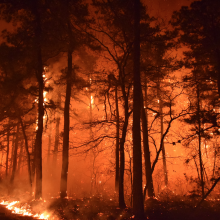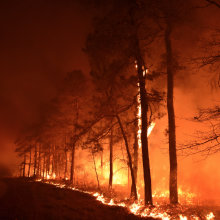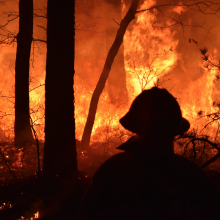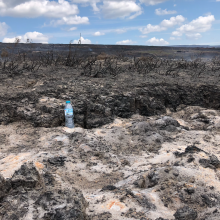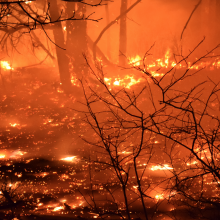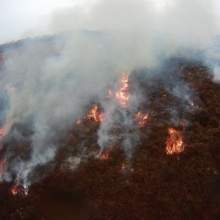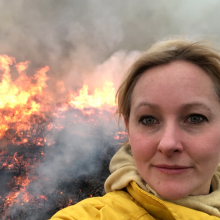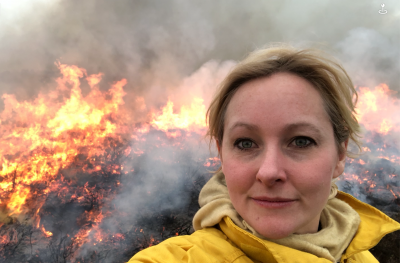
Prof. Claire Belcher at controlled burn in Dorset UK
Prof. Claire Belcher sets things on fire. It's part of her job as a Professor and Chair in Wildland Fire in University of Exter. Thanks to the data from her research, she can study fire behaviour, and its influence on the environment. On January 25th, prof. Belcher arrived in Gdańsk for her 2-week stay at University of Gdańsks Geography Institute as part of the "Visiting Professors" initiative.
Marcel Jakubowski: - What will you do here during your two-week stay?
Prof. Claire Belcher: - I'm doing two things here. I'm working with dr Alicja Bonk and prof. Wojciech Tylmann to understand the behaviour of fire in the past using fossil charcoal. I'll also run some activities for students - a lecture followed by a workshop. We're going to use a piece of computer software called BehavePlus. It's free and was built by Missoula Fire Lab in the USA. The program estimates and predicts fire behaviour. It’s usually used for the modern day, but we're going to use it for data from 10,000 years ago.
- You explore how wildfires influence the current environment, but you also research conflagrations from a long time ago, like Jurassic or Cretaceous period. What can we learn from that time about our current situation?
- We can learn lots of different things from looking at the past record of wildfires. You mentioned the Jurassic research. Around 200,000,000 years ago, the earth went through a big global warming event around. The temperature rose four degrees on average. It took longer to happen than it is taking now, but we can study how ecosystems changed and how fire activity changed across this big global warming event. Hopefully, we’ll get some additional understanding of how things might change today. That's one side of it, the other side is that many plants have adaptations that help them survive in fires. Many of these adaptations evolved hundreds of millions years ago, particularly in the Cretaceous period, when there was a lot of fire. We're trying to establish, in what environments and under what fire behaviour contexts, those plant traits evolved. Thanks to that research, we can see how well or how fit they might be as our world gets more flammable in the future.
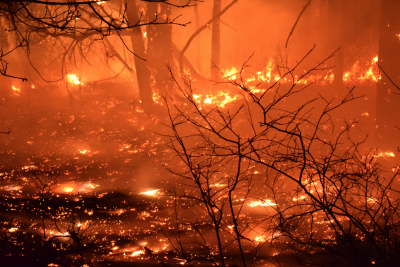
Experimental wildfire in New Jersey, USA. photo: Claire Belcher
- In the last decades, the average global temperature has risen about one and a half Celsius degree. Is it the only thing that makes the wildfires happen more often?
- It's definitely a mixture of both humans and climate change at the moment. Most people are particularly familiar with the huge wildfires that have been happening in the USA over recent years, particularly in the West Coast. These are actually a combination of climate change and really long periods of drought and the way in which the USA have managed their forests for the last 100 years. They stopped all wildfires burning which has now led to lots of the forest just growing and growing. Normally, fires burn out little patches of the forest, but they've ended up with too much forest. Those flames now have got so much fuel to burn that they become absolutely huge. Similar wildfires are also happening in the South of Europe, but it’s driven by a different factor. Spanish and Portuguese people used to have a lot of farming in the hills, but they've abandoned them to live in cities. Goats, sheep, and cows haven't been keeping the vegetation small. The vegetation became very dense, and this now carries extreme fires. So in places where there is lots and lots of potential fuel and drier weather caused by new climate extremes, you can get megafires.
- Is this phenomenon specific to Spain, California, and Australia?
- No, even Poland has been seeing more wildfires lately. In 2020 your country had 10-times more average burn area than it's had in the last a decade.
- The CO2 emitted by Australian wildfires in 2021 was bigger than the annual CO2 emission of Germany. This seems like an endless cycle, where fires caused in some part by climate change emit CO2, so the climate change gets worse and so on.
- Generally it's not the case, because wildfires are considered to be of an equal CO2 balance. They basically admit lots of carbon dioxide, but when that vegetation grows back, they often absorb more carbon dioxide to the atmosphere.
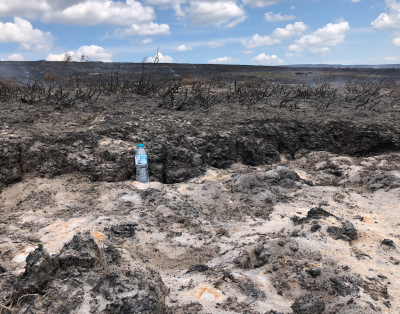
Large depth of peat removed Saddleworth Moor UK. photo: Claire Belcher
- When can wildfires harmful for the environment?
- Yes some, in particular peat fires. Indonesia, has seen a lot of large peat fires. If you're burning peat, then you are releasing carbon stored for thousands of years. That will take a lot longer to reform again. So where people burn peat, there’s an issue as this is releasing CO2 for the long term into the atmosphere.
- According to Stephen J. Pyne humans developed during Pyrocene, the age of fire. Our relation with flame was symbiotic at first, but now we see disadvantages of our inventions that make use of e.g. fossil fuels. Do you think that with renewable technology becoming more popular, we might stop depending on fire and leave Pyrocene?
- I think the Pyrocene has two definitions. It's the age in which man has used fire. At the beginning of this time, we didn’t have a damaging impact on Earth’s ecosystems. But now, we've created new fire regimes - areas of the landscape that burn unnaturally. The second aspect of the Pyrocene is people's lack of connection with fire, which is more what you're describing here. If we look out the window, we can see cars that use fire to move. We know that there’s a fire inside those vehicles, but we don't see it. Stephen Pyne suggested that many people are essentially pyrophobic. They're scared of fire because they never see it, when people see fire on the landscape, they think, “Oh no, that's really, really bad”. Whilst having electric cars will prevent us from releasing lots of carbon dioxide, the Pyrocene might be more about helping people to understand the role that of fires in the world.
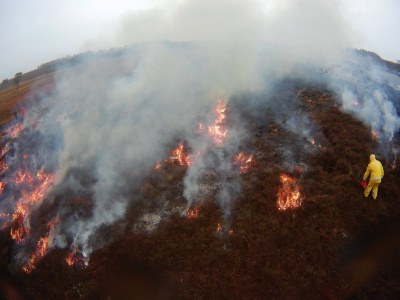
Experimental wildfire. photo: Claire Belcher. photo: Claire Belcher
- As an environmentalist, are you able to remain hopeful about the future?
- There are two ways to look at this. The other day I took part in an important parliamentary meeting about UK fires. We looked at the problems of regulating how we use fire and manage our ecosystems. It’s a big and challenging issue. So in one aspect, I see it as a really important concern, where nations need to come together to work these things out. But in terms of the planet and its long term health, as long as fire is a part of that, ecosystems will continue to live. It's just more about understanding how we can live with fire. That's the challenge.


